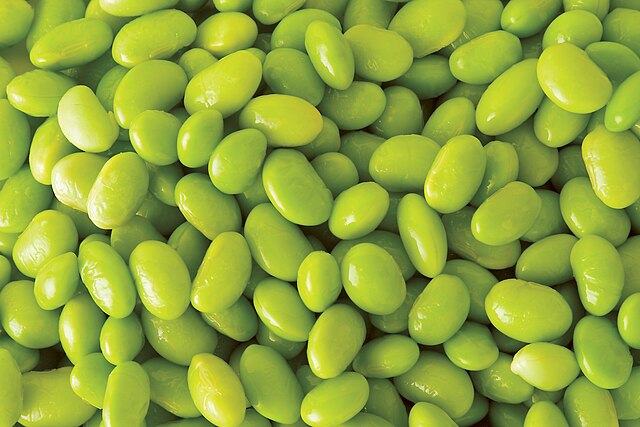Soy farmers in the American Midwest are experiencing softened prices due to a China boycott that has sent ripple effects globally.
As of September 29, 2025, cash prices at the U.S. CmdtyView were US¢3.5 down day-on-day, to $9.34 1/4 a bushel.
The prices faltered after a brief rally occasioned by a diplomatic call between President Trump of the United States and Xi of China.
But the immediate cause is the fact that the U.S.’ crop has begun its fall marketing season with no China orders.
The United States shipped approximately $24.5 billion of soya in 2024, out of which China purchased $12.5 billion.
This time last year, Beijing had made record bookings, but by September 28, 2025, it had placed $0 orders.
Instead, the United States has lately shipped its earliest harvests totaling 593,956 tonnes to mainly Germany at 128,961 tonnes. Although the week’s exports were 5% more year-on-year, they fell 13.1% week-on-week.
79% of the federal soy crop has already dropped leaves, with 19% harvested so far before end September.
A Soy-sore Midwest
In the Midwest soy fields where the bulk of the federal harvest emanates, China’s absence is hurting farmers.
Minnesota’s 26,000 growers are baffled at where to export, since they ship 60% of their production – mostly to the Far-East nation.
A recent bailout promise by the United States on Argentina has ironically worsened growers’ plight: that same week, Argentina reportedly flooded the China market with its soy, crashing worldwide rates.
Conversely, soyabean prices in the U.S. recently dropped to 0.39 euro ($0.46) a kg in Europe while India’s shed $0.6 a quintal (100 kg).
The Midwest soy industry is however hopeful of a two-way outcome from the ongoing China talks. The outcome could be either a lessening of the 34% retaliatory tariff or an aid package that Trump has been considering offering. The stats below put this into perspective by reviewing soy trade between the two economic powers.
United States-China Soy Trade Statistics
Soybeans are the biggest farm export by the United States, with a 14% niche share, according to the USImportData. In 2024, soy emerged the 13th biggest overall export from the U.S., worth $24.6 billion. The 2024 returns overtook those for computer parts, trucks and semi-conductors. Apart from soy, only corn at a worth of $14.3 billion made the top 20 exports among food produce. China fuels the oilseed’s revenue by buying between 1/4 and 1/2 of the American soy crop in the best years. In 2024, for example, it grabbed $12.5 billion or half the crop from U.S.’ exporters.
How was Sino-American soy trade in 2025?
In 2025, there were no orders by China by September 22 of the year, unlike in 2024. As a result, prices of soy and corn were down end September by 40 to 50% from previous highs, per Yahoo Finance UK. China refocused its purchases to Brazil and Argentina after slapping 34% on U.S.’ soys in retaliatory tariffs.
Who sells the most soybeans in the world and who is most expensive?
Seasonal tallies shows that Brazil and the United States lead soy export values while Austria, Belgium and Romania sell expensively. The table below, an interpretation, gives the full picture:
| Country | Top Soy export value in 2024 | Top Soy price in 2024 [$tonne] |
| Brazil | $42.9 billion | |
| United States | $24.6 billion | |
| Paraguay | $3.2 billion | |
| Argentina | $1.8 billion | |
| Austria | $774/tonne | |
| Belgium | $586/tonne | |
| Romania | $527/tonne | |
| The Netherlands | 512/tonne |
